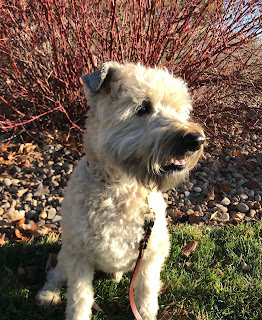 The first month of the new year is behind us, can you tell the days are getting ever so slightly longer? It won't be long before we start hearing and saying - "spring won't be long."
The first month of the new year is behind us, can you tell the days are getting ever so slightly longer? It won't be long before we start hearing and saying - "spring won't be long." Instead of my usual do this or don't do that Punch List or mention of basil, garlic, the weather or our dog Ferris, I thought it might be interesting and hopefully helpful to share garden tips that I've read about over the years. My sources are many - from garden magazines, books, the internet, friends, neighbors and family. I'll start sharing these with you, although I may still scribble a blog here and there about gardening or timely must dos and planting/seeding charts.
No rules here on these tips and tricks friend - it's take or leave it, or modify to make it better and work for your situation. If you have a tip to share, just leave the informaton in the comment box below and perhaps I'll share it with others. Be sure to let me know if you want your name used. I have to okay the comments beforehand, you wouldn't believe how much spam tries to come through my blog.
Fresh water is scarce for our feathered bird friends in the winter and I like to help keep them hydrated. My neighbors have several bird feeders while I leave all the perennial and herb foliage seeds for winter snacking, all good.
There are a few ways other than my method to provide fresh water. Heated, outdoor water heaters and heated trays are commonly used. These are available for purchase or DIY. I have a box with heated tray, made by my dad many years ago. Rather than using, I prefer to display it in my garden room to remind me of him.
This is truly a no-brainer tip. Obviously, water in any outdoor bird bath is going to go through freeze and thaw cycles, most likely leading to cracking damage. My method allows for daily fresh water on top of the bird bath.
Plastic trays are inexpensive and most are recyclable, so if they crack, can easily be replaced.
I simply place three boards over the concrete bird bath to elevate the plastic tray a bit. You probably have plenty of these trays that are used under containers. You'll need two trays. I fill one with fresh water each morning. Usually the birds let me know they are thirsty when they are flying around the area and making some noise. Of course it's usually right in the middle of my morning oatmeal and coffee. I love being needed!
Because I don't usually empty the water each night before it freezes, I take the frozen tray and replace it with the other plastic tray and fill that one with water.
 I
let the frozen tray thaw a bit near a patio, then turn it over near a
brick wall and let it thaw on the grass which adds a bit of moisture to the
area. Sometimes the water doesn't freeze all the way so I'll toss the
water on the nearby raised beds. Do whatever you wish with the round
frozen ice cube, I just like the ease of exchanging the frozen tray each
day. If you cover your bird bath each winter to prevent moisture from getting in, you can still use a tray to water the birds!
I
let the frozen tray thaw a bit near a patio, then turn it over near a
brick wall and let it thaw on the grass which adds a bit of moisture to the
area. Sometimes the water doesn't freeze all the way so I'll toss the
water on the nearby raised beds. Do whatever you wish with the round
frozen ice cube, I just like the ease of exchanging the frozen tray each
day. If you cover your bird bath each winter to prevent moisture from getting in, you can still use a tray to water the birds! |
| Winter Cover for your Bird Bath can still be used to give Birds needed Water! |




















